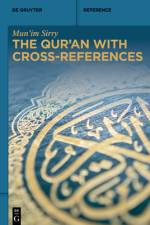av Mun'im Sirry
2 455,-
The Qur'an with Cross-References provides for nearly every verse in the Qur'an a selection of other verses which shed light upon, clarify, or explain the verse you are reading. The Qur'an in its printed edition has not yet been cross-referenced, despite the fact that Qur'an commentators realized quite early on the central importance of tafsīr al-Qur'ān bi'l-Qur'ān (interpreting the Qur'an through the Qur'an itself). Even some modern Muslim exegetes claim to follow this method. However, the cross-references they provided are very limited. Perhaps, the most extensive treatment and pioneered work on tafsīr al-Qur'ān bi'l-Qur'ān is that composed by Rudi Paret entitled Der Koran: Kommentar und Konkordanz. Paret's work is certainly very rich, which includes - in addition to possible cross-references - interpretations of and alternate renderings for a given verse or passage. Furthermore, as the term "Konkordanz" may indicate, his Der Koran provides all identical or similar phraseology and usage in different places of the Qur'an, a model that will not be followed in this Qur'an cross-references project. Instead, The Qur'an with Cross-References is based on connection between words, phrases, themes, concepts, events, and characters. One word may occur several times in the Qur'an, but the cross references will be made only where there is connection in meaning between two or more verses or passages. In preparing this cross-references project, several models and methods used for the cross-references of the Bible are consulted. As is well-known, Bible cross-references have been a long-established tradition, while the Qur'an, at least in its printed edition, has not been cross-referenced. The Qur'an with Cross-References is the first of its kind. The field has needed something like this, because in the existing Qur'an there is nothing to indicate that certain passages can shed light upon, clarify, or explain other passages.


